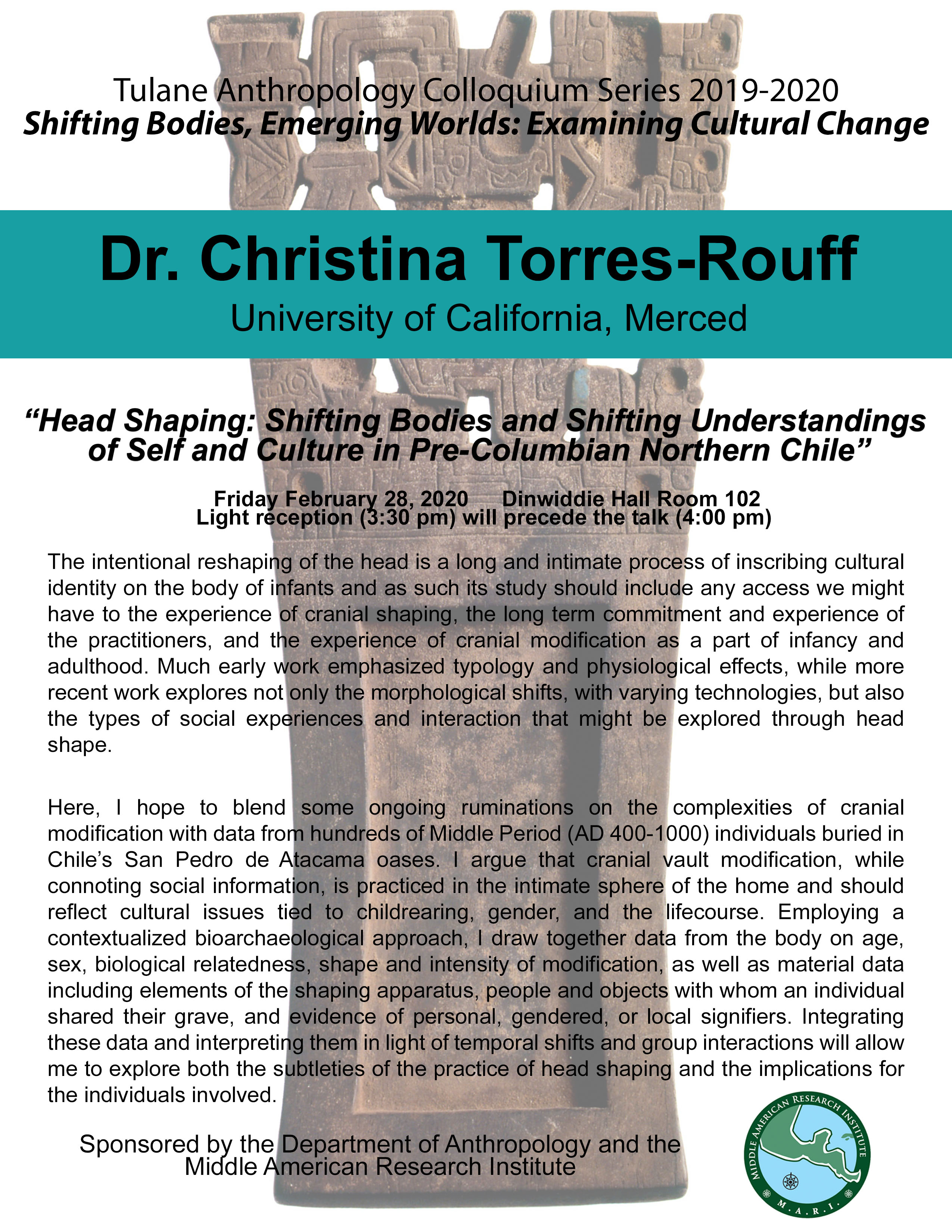Head shaping: Shifting bodies and shifting understandings of self and culture in pre-Columbian northern Chile

Please join us on Friday, February 28 for the first Anthropology colloquium of the semester. Dr. Christina Torres-Rouff from the University of California, Merced will present a talk titled, "Head Shaping: Shifting Bodies and Shifting Understandings of Self and Culture in Pre-Columbian Northern Chile" in Dinwiddie Hall Room 102. Please see the abstract below.
The intentional reshaping of the head is a long and intimate process of inscribing cultural identity on the body of infants and as such its study should include any access we might have to the experience of cranial shaping, the long term commitment and experience of the practitioners, and the experience of cranial modification as a part of infancy and adulthood. Much early work emphasized typology and physiological effects, while more recent work explores not only the morphological shifts, with varying technologies, but also the types of social experiences and interaction that might be explored through head shape.
Here, I hope to blend some ongoing ruminations on the complexities of cranial modification with data from hundreds of Middle Period (AD 400-1000) individuals buried in Chile’s San Pedro de Atacama oases. I argue that cranial vault modification, while connoting social information, is practiced in the intimate sphere of the home and should reflect cultural issues tied to childrearing, gender, and the lifecourse. Employing a contextualized bioarchaeological approach, I draw together data from the body on age, sex, biological relatedness, shape and intensity of modification, as well as material data including elements of the shaping apparatus, people and objects with whom an individual shared their grave, and evidence of personal, gendered, or local signifiers. Integrating these data and interpreting them in light of temporal shifts and group interactions will allow me to explore both the subtleties of the practice of head shaping and the implications for the individuals involved.
